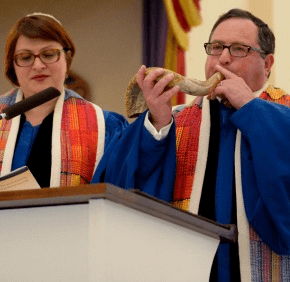
Showing solidarity for a stronger Baltimore, Archbishop William E. Lori and area faith leaders join hands in song to close the April 25 interfaith prayer service for peace at the Basilica of the National Shrine of the Assumption of the Blessed Virgin Mary in Baltimore. (Kevin J. Parks/CR Staff)

Prayers of healing and unity in Baltimore was the theme for the April 25 interfaith prayer service held at the Basilica of the National Shrine of the Assumption of the Blessed Virgin Mary in Baltimore. (Kevin J. Parks/CR Staff)

Baltimore Mayor Stephanie Rawlings-Blake prays during the April 25 prayer service at the Baltimore Basilica. (Kevin J. Parks/CR Staff)
A Catholic Review video with scenes from the service follows; story continues below.
Reflecting on a reading from St. Paul’s Letter to the Hebrews, the Rev. Mary Gaut of the Presbytery of Baltimore, recalled watching the events of April 27 a year ago unfold “from the relative comfort of our own homes” through the mediated perspective of a TV camera, as many did. “We got a pretty good sense of what was going on, but how great was the distance between us and what was happening there on the streets of our town?” Events happening a few miles away felt as though they could have been as distant as hundreds or thousands of miles. “If we were not there and we did not hear the shattering of glass or the pounding of boots running down the street, we did not smell the smoke or feel the heat of the fires, rather we heard news crews describe these things for us,” Rev. Gaut said.

To see more photos or order prints, click here.
Also see:
Interfaith and ecumenical delegation from Baltimore meets Pope Francis
Archbishop Lori gives preaching skills a workout at Bethel A.M.E.


